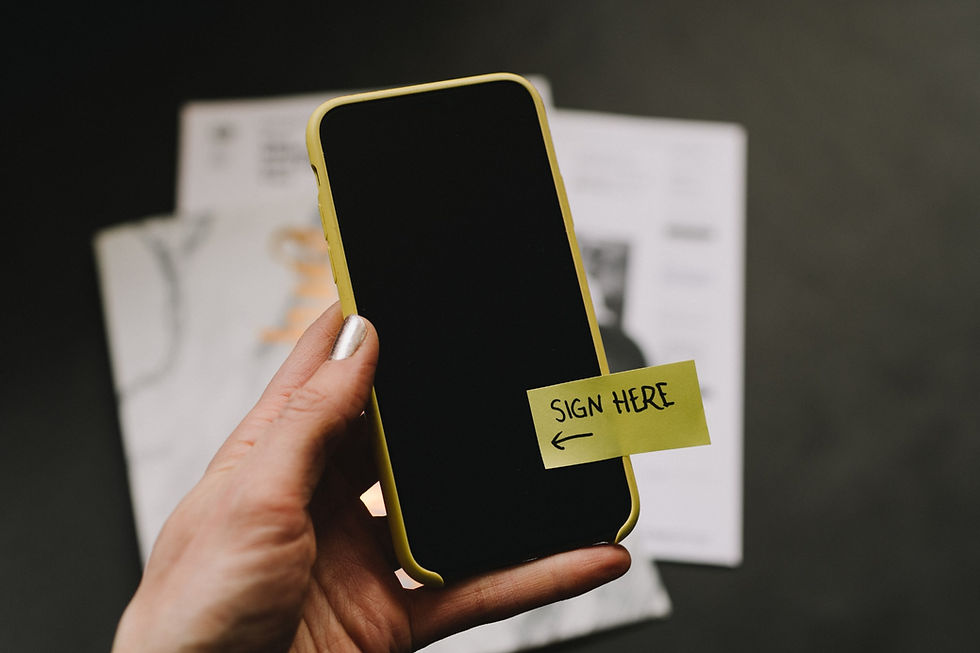OED’s War on Signatures – Understanding Signature Issues in Trademark Filings
- Emil J. Ali

- Feb 10, 2020
- 3 min read
Updated: Aug 1, 2020
The letter comes in the mail from OED asking you a few questions about a handful of applications, including whether each form was electronically signed by the respective applicant or attorney. The light bulb still has not hit—you ask yourself who is OED, and why are they asking about signatures. You read further into the letter, known as a Request for Information and Evidence (RFI) and you see allegations of competence, misconduct, and citations to the TMEP. This must be a joke!
By the time you get further into reading TMEP, you realize that the rules require that “a signature must bear either a handwritten signature personally signed in permanent ink by the person named as the signatory, or an ‘electronic signature’ that meets the requirements of 37 C.F.R. §2.193(c), personally entered by the signatory.” See TMEP 611.01(b). You then read further into the regulation and note that Section 2.193(c) dictates that “A person signing a document electronically must … Personally enter any combination of letters, numbers, spaces and/or punctuation marks that he or she has adopted as a signature, placed between two forward slash (“/”) symbols in the signature block on the electronic submission…”

As you read the RFI, you are still puzzled because you believe all the trademark applications and responses you filed were done correctly.. In fact, you personally reviewed each document before it was filed. The next morning, as you are approving a mark, you realize that you did not sign the mark—it was pre-signed. Then it hits you—OED believes that lawyers are not permitted to sign documents on behalf of clients, and cannot have their own right hand men and women—paralegals—sign on behalf of them.
You do your diligent research and find that the Electronic Signature in Global and National Commerce Act, 15 U.S.C. § 7001 clearly preempts most other laws governing signatures, and that contracts cannot be invalidated solely due to the mechanism of the signature. You further look at the Restatement of the Law, Agency and seem to find authority supporting the position that your conduct was in fact appropriate—but it is not clear.
You think the worst and read about OED Final Orders in which attorneys lost their license for similar alleged conduct. Hopefully, you also understand the importance of responding promptly and honestly to OED, with an appropriate legal strategy. Of course, as you decide to respond, you think about the importance of: (1) protecting your clients’ rights; (2) protecting your law license; and (3) correcting any problems.
But how did you get into OED’s sights? The answer is likely related to IP addresses or trademark examining attorneys. Suspicious activity, including foreign IP addresses or numerous successive filings, especially those rife with mistakes, can cause referrals to OED for further investigation. Therefore, it is important for trademark practitioners to be mindful of their obligations under the TMEP—including the often-unknown signature rules, and ensure that the named signatory personally signs their own names—and that they are the proper person to sign. Some important tips:
The client should sign documents whenever possible. This can be achieved using the ESIGN-ON method, and allows the client to make the declaration, rather than the attorney
The attorney should personally (not through a paralegal) sign documents when the client is unable, but only after careful review of the facts
The client should always sign the power of attorney, unless another attorney from the same firm is already of record
Whether or not you agree with OED's position regarding signature issues, the USPTO Director has approved the settlements of a number of trademark practitioners for similar conduct. Indeed, many practitioners unfamiliar with the nuances of signature rules and OED practice have fallen into the trap of easy settlement, leading to potential reciprocal discipline. Indeed, practitioners should be mindful of the importance of working to protect the rights of clients, and avoid the ire of OED. After all, the signing of a signature by the "correct" party need only add a few minutes to each application.
For additional information, please contact McCabe & Ali, LLP at 877-OED-4097.
This post is made available by the lawyer for educational purposes and to provide general information, not to provide specific legal advice. By using this site, you understand that there is no attorney-client relationship between you and the publisher.



Comments